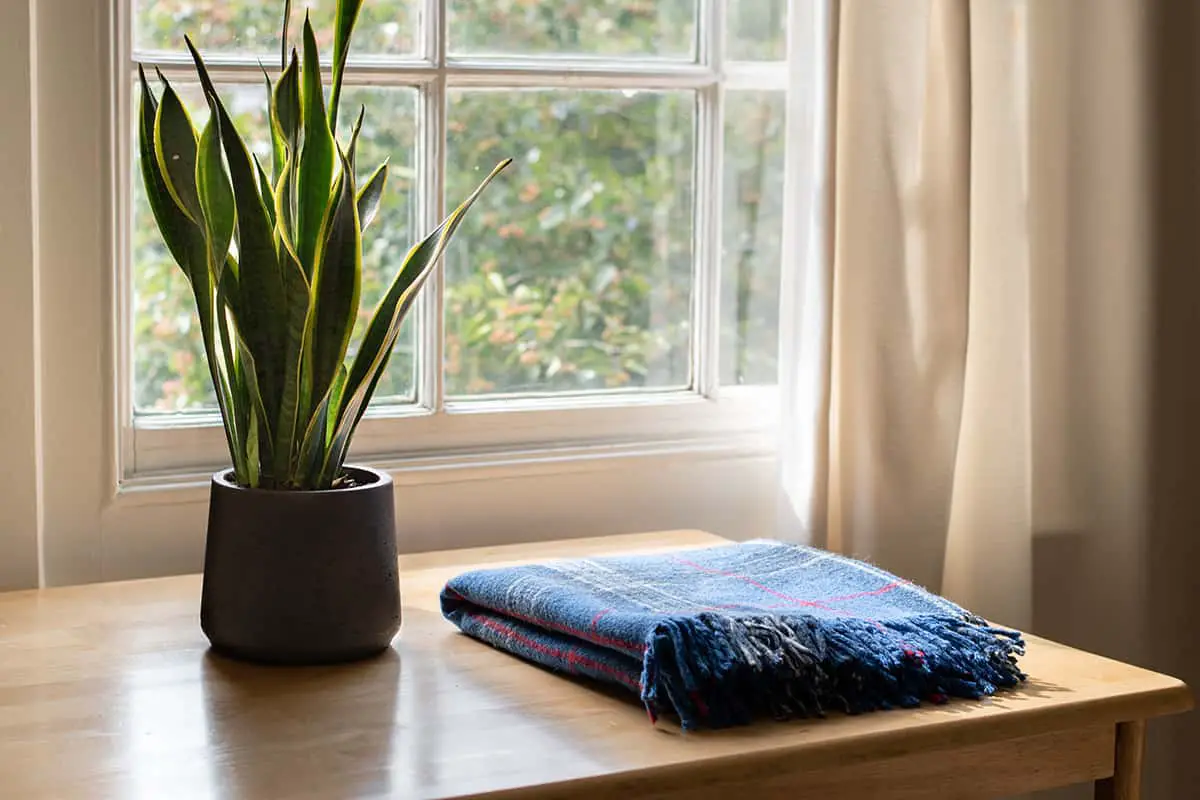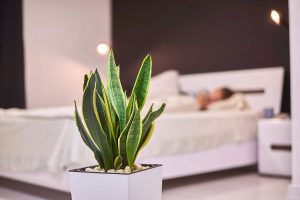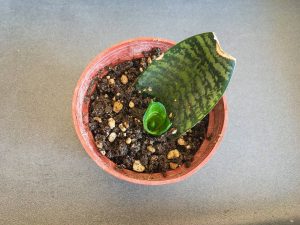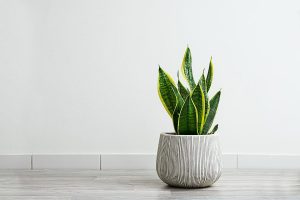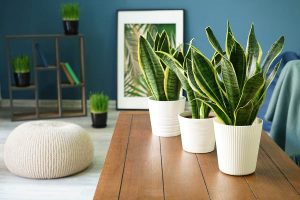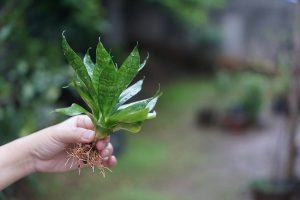The Black Gold Snake Plant is one of the most popular types of snake plants which is kept as a houseplant. It has long, lance-shaped leaves, which are quite tough and fleshy. The foliage comes to a gradual point at the tips and is dark green, with yellow edging strips running vertically along the lengths of the leaves.
This plant has a manageable mature height of around 3 feet, adding architectural definition to a room without outgrowing its spot. It is low maintenance and has a striking aesthetic, making it easy to see why this is a favorite among growers.
| Botanical name | Sansevieria Trifasciata Black Gold |
| Common names | Black Gold Snake Plant |
| Plant family | Asparagaceae |
| USDA hardiness zone | 9- 11 |
| Mature height | 3 feet |
| Mature spread | 1 to 2 feet |
Table of Contents
Varieties of Black Gold Snake Plant
The Black Gold Snake Plant is a cultivar of the Sansevieria Trifasciata species. Some other cultivars of this snake plant include:
Sansevieria Trifasciata Bantel’s Sensation
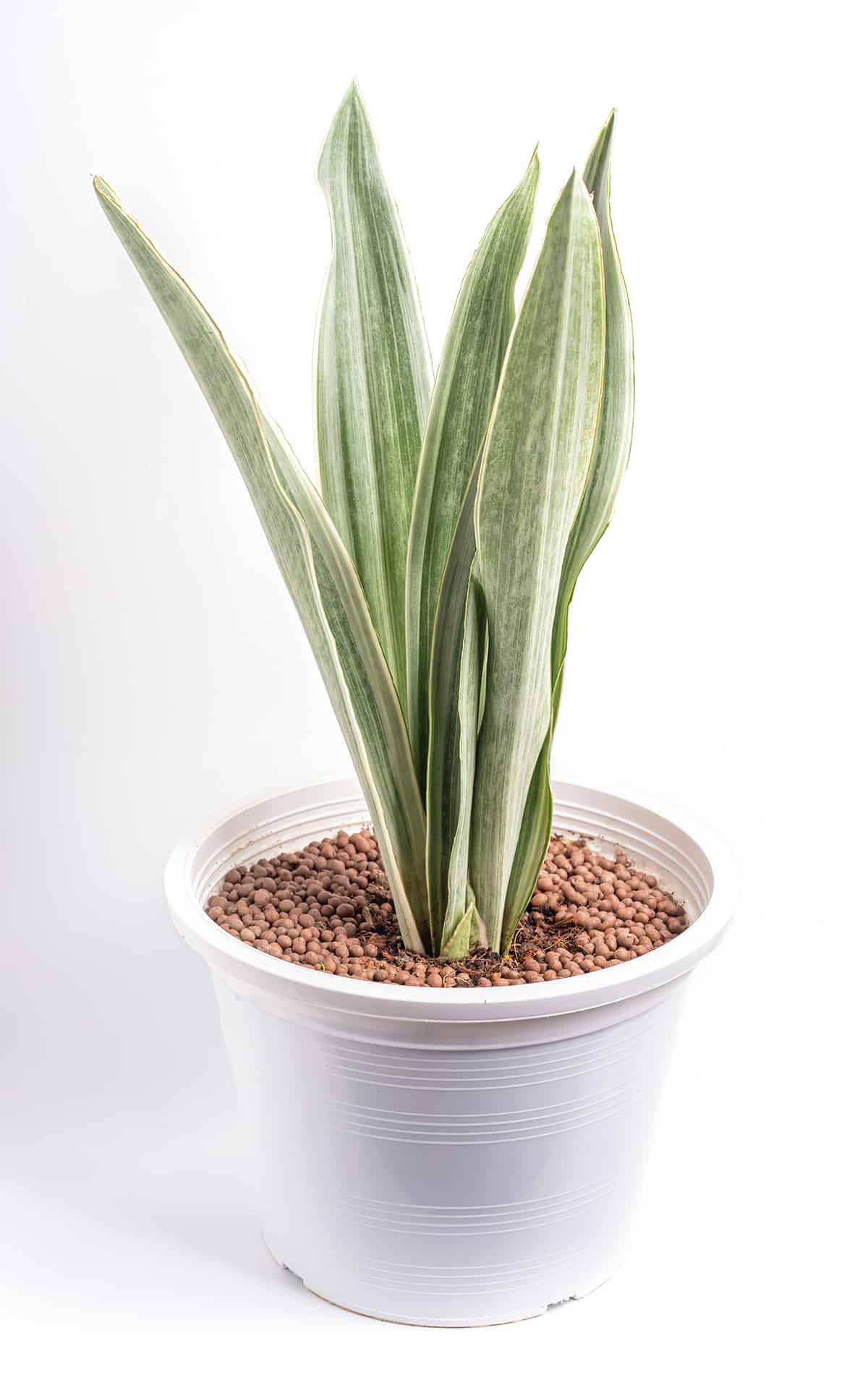
This snake plant has leaves that are more narrow than most other snake plants and coloring that makes it very distinctive. Each leaf is a dark green color, with vivid white stripes running along the length. Like the Black Gold Snake Plant, this cultivar grows to typical heights of 3 feet when grown as a houseplant.
Sansevieria Trifasciata Moonshine

This cultivar of Sansevieria Trifasciata stands out due to its mint green foliage. It prefers brighter light than most types of snake plants, to help maintain its coloring.
How to Care for your Black Gold Snake Plant
The Black Gold Snake Plant is a good choice of houseplants for beginner growers or those among us who struggle to keep plants alive because it is adaptable to a range of conditions and doesn’t require much attention at all. In fact, this is a plant that is known to thrive on neglect, so it’s also ideal for forgetful or busy plant owners who might be prone to skipping waterings.
If you have a Black Gold Snake Plant, you will find that it is simple to care for. Follow these growing tips to keep your snake plant in optimum condition.
Light
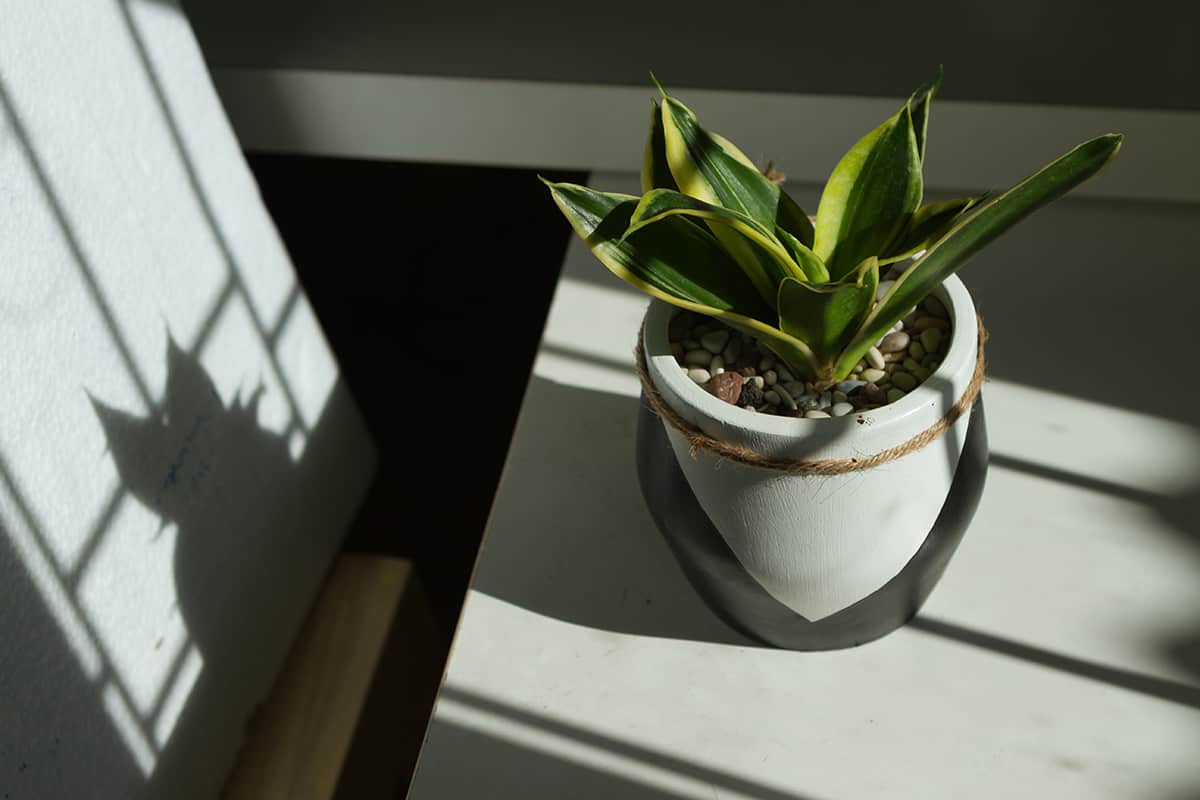
Black Gold Snake Plants will survive in any type of lighting, including artificial lighting. This means that the plant is often hailed as being a good office plant, where windows might be small or in short supply, and most of the light comes from overhead bulbs. It also works well as a houseplant in a shaded corner of a room since a lack of light will not kill this plant.
However, if you really want your Black Gold Snake Plant to thrive, then it will perform best in bright, indirect light. This will help to maintain the sharp contrast in color between the dark green leaves and bright yellow edges. Situate the plant on a coffee table or side table several feet away from a bright window, or keep it by a window with blinds or sheer drapes to filter the light. The Black Gold Snake Plant will also grow well in direct sunlight, but it should be exposed to this slowly to avoid scorching the leaves.
Soil
Black Gold Snake Plants rely on being grown in the right type of soil to stay healthy. The best soil for snake plants is one that drains well. Avoid compacted soils or clay soils that drain slowly or those which lack aeration. Opt for a succulent potting soil mix, or create your own from a regular soil mix with the addition of perlite or sand to improve drainage.
Ensuring the Black Gold Snake Plant is grown in well-draining soil will go a long way to making the care and maintenance of the plant easier and free from problems. Although this is not a fussy plant, it does not like to be kept in soggy soil, and well-draining soil will prevent this from happening because any excess moisture can drain away from the roots.
Water
Watering your Black Gold Snake Plant in an appropriate way will be vital for your success in growing this plant, and it’s really easy once you understand how the plant likes to be kept. The number one rule for growing a snake plant is to not overwater it. These are not thirsty plants, so instead of absorbing additional moisture, excess moisture which is held against the roots will cause them to rot, eventually leading to the demise of the plant.
There is a very simple way to avoid overwatering, and this is to check on the condition of the plant’s soil each time you go to water it. Before watering, dip your finger a few inches into the soil and feel for moisture. If it is moist, don’t water it, and hold out for a few more days. If it is dry, you can go ahead and water it. This tactic takes just a few seconds, and it will literally save the life of your plant if you are prone to improper watering.
On the other end of the spectrum, Black Gold Snake Plants should not be deprived of water for too long. They are succulents that store moisture reserves in their fleshy leaves, so once the soil has dried out and the roots cannot find any moisture, the plant will keep itself alive by using the moisture in its leaves.
It can survive for quite a long time like this, but in the course of doing so it will sacrifice the leaves. In most instances, if you have forgotten to water your plant for too long, you will just notice that the foliage tips turn brown and dry. You should aim to be checking on the soil of your plant weekly throughout the warmer months and monthly in the colder months, and only proceed with watering when the soil is dry. This combination will ensure your watering regime is just right for your Black Gold Snake Plant.
Temperature
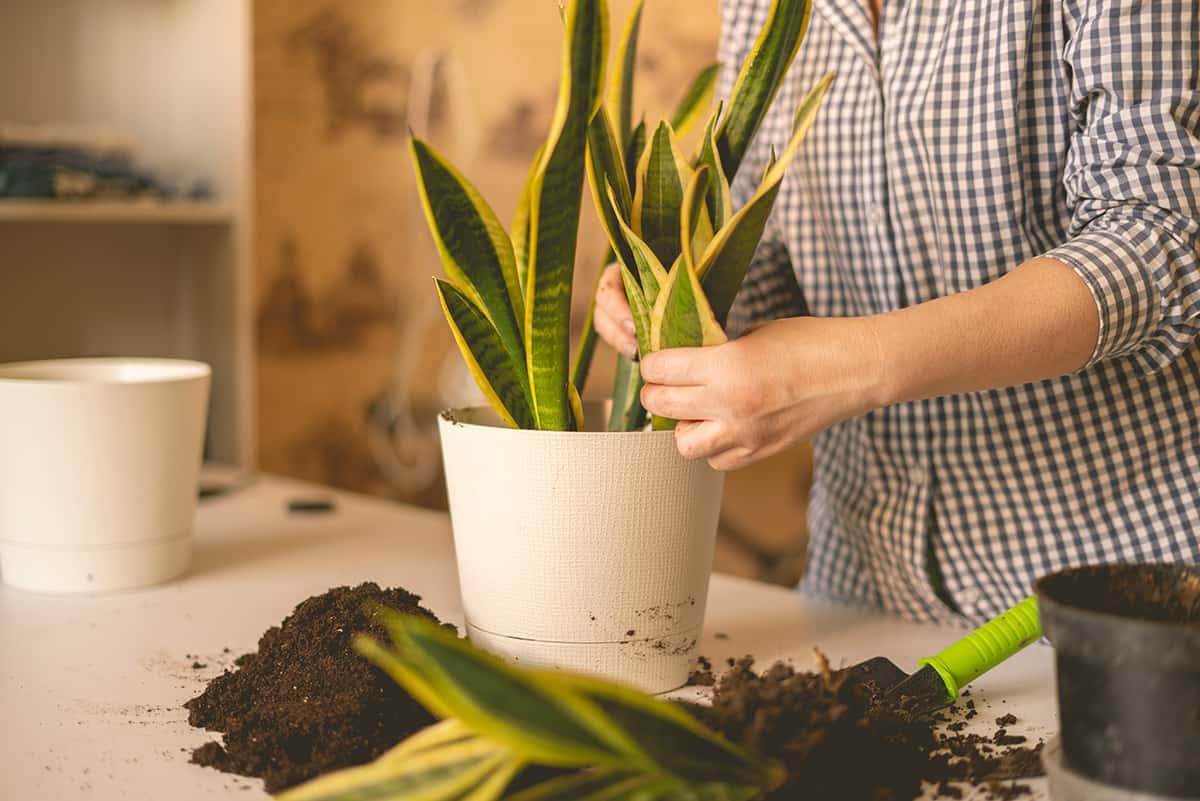
As a native West African plant, the Black Gold Snake Plant is used to hot environments. It will thrive in the typical room temperatures of a home, which tend to be kept warm all year round. These plants can also be grown outside in USDA hardiness zones 9 through 11, where the temperature does not drop beneath 50° F.
If you do not live in zones 9 to 11 and want to keep your Black Gold Snake Plant outside during summer, you can do so providing you remember to bring it back inside to warmer temperatures well before the first frost. Always inspect a plant for pests before you bring it back inside from the garden.
Humidity
Black Gold Snake Plants do not need high levels of humidity to thrive, and they do just fine at typical humidity levels found in homes. They can experience brown tips on their foliage if the humidity is very low (around 30%) but most commonly household humidity sits at around 50%, which is ideal for snake plants.
Black Gold Snake Plant FAQs
How long does a Black Gold Snake Plant live for?
The lifespan of a snake plant is dependent on the care it receives rather than a predetermined length of time. Typically Black Gold Snake Plants will live in excess of 10 years as a houseplant and longer when grown outside or in their native habitats. You can extend their lives by providing them with ideal care conditions, such as consistent infrequent watering, well-draining soil, and bright indirect light.
Are Black Gold Snake Plants good for you?
Black Gold Snake Plants, like other varieties of snake plants, are known to be among the best types of plants for filtering toxins from the air. Their air purifying qualities means that they are among the healthiest plants to grow indoors. As a result, they are extremely popular as houseplants and office plants because they create a better quality of air.
Some of the toxins it removes from the air include formaldehyde, nitrogen oxides, and xylene. It also continues to purify the air throughout the night, which few houseplants are able to do. The majority of plants will begin to release carbon dioxide during nighttime hours, while snake plants will continue their job of converting carbon dioxide into oxygen. This makes snake plants a particularly good choice of a houseplant for the bedroom.
Do Black Gold Snake Plants flower?
Black Gold Snake Plants do produce flowers, but this is rare when they are kept as houseplants. The flowers of this plant are not especially attractive, and most people consider them to be quite insignificant.
They appear as a delicate spray of white or green flowers, and they are actually a bad sign because they signal the end of growth for your snake plant. A Black Gold Snake Plant will usually only flower once it has finished growing in height, and the flowering of the plant indicates that you will see no more growth from the plant.
